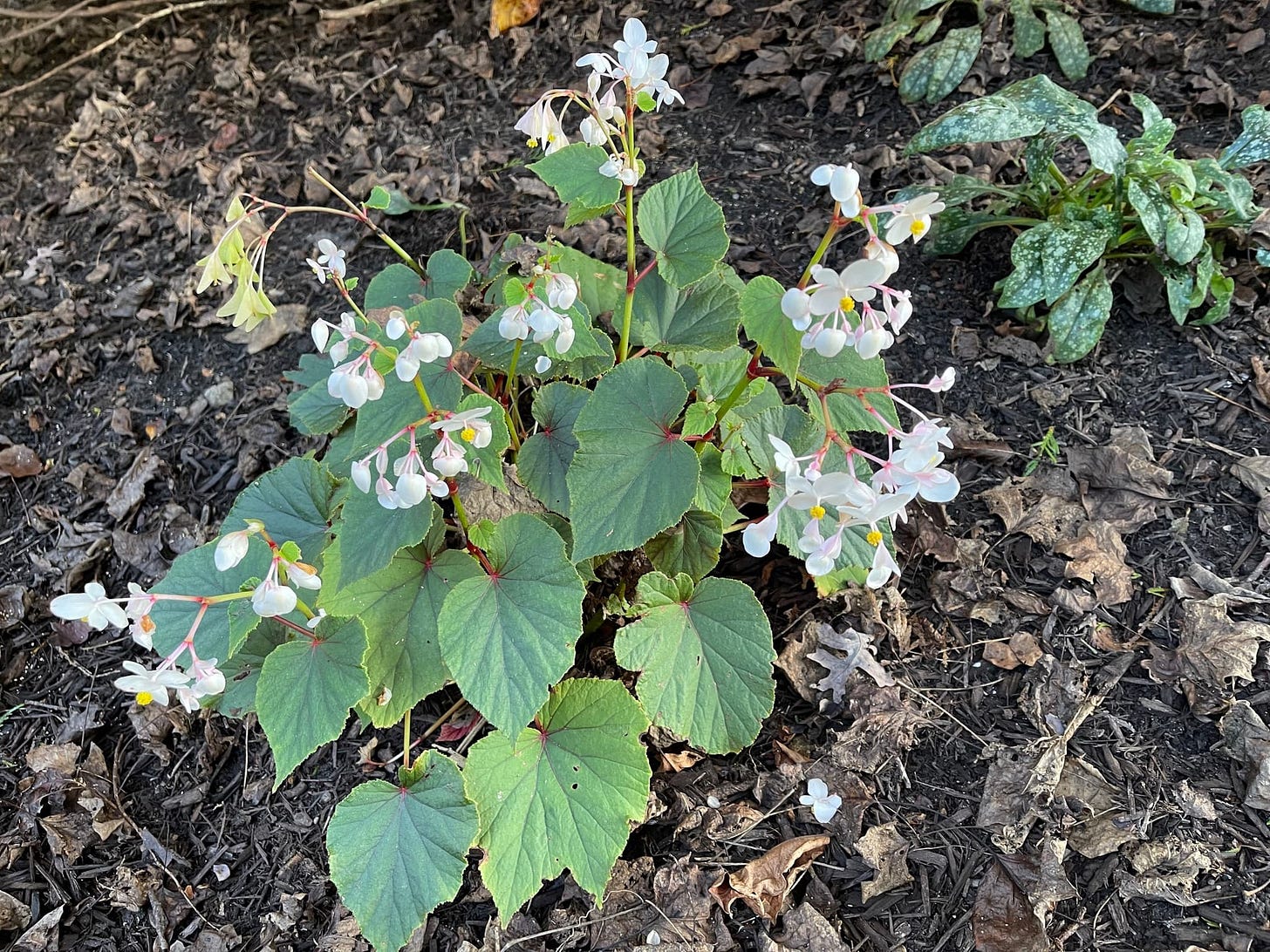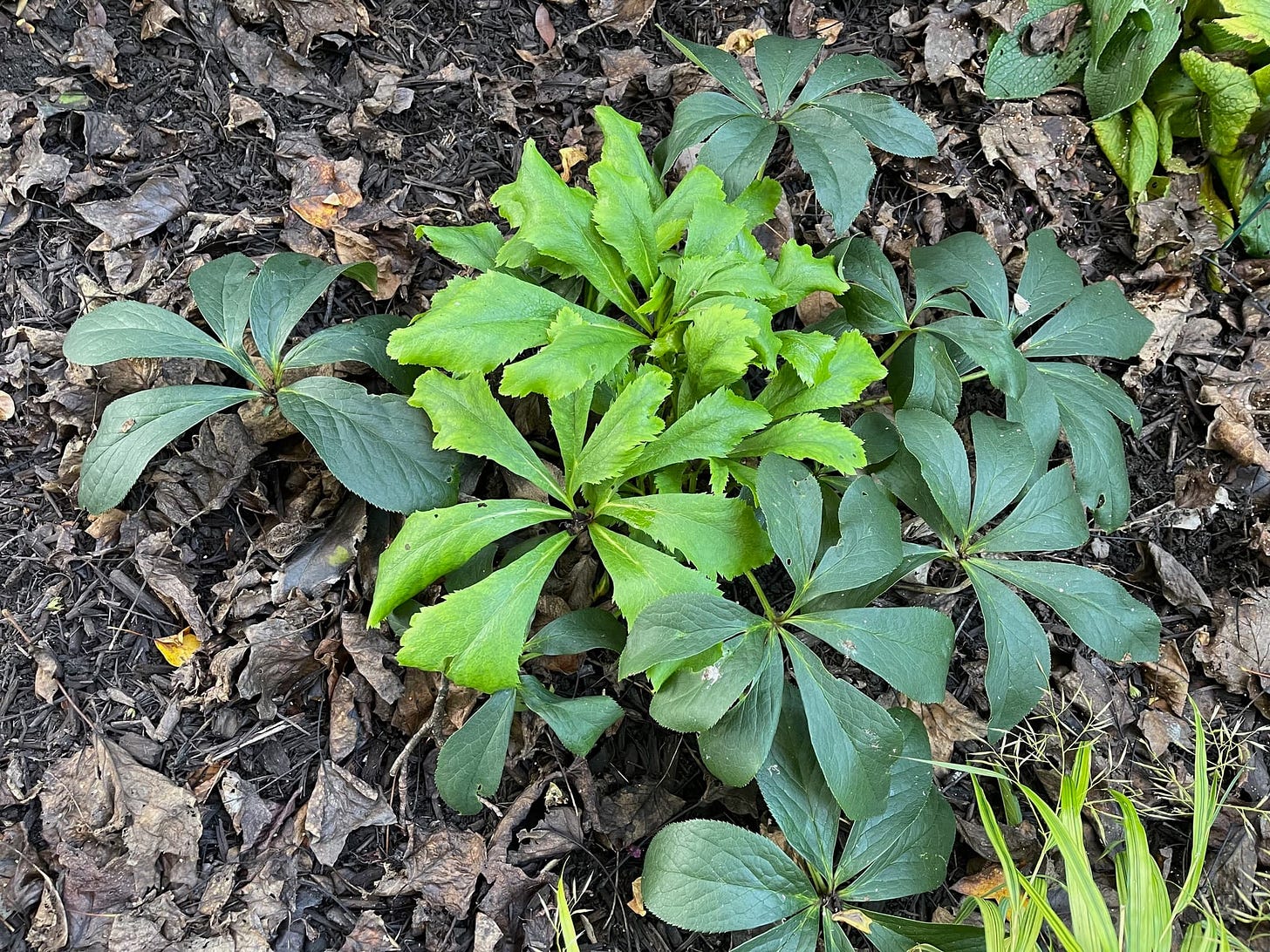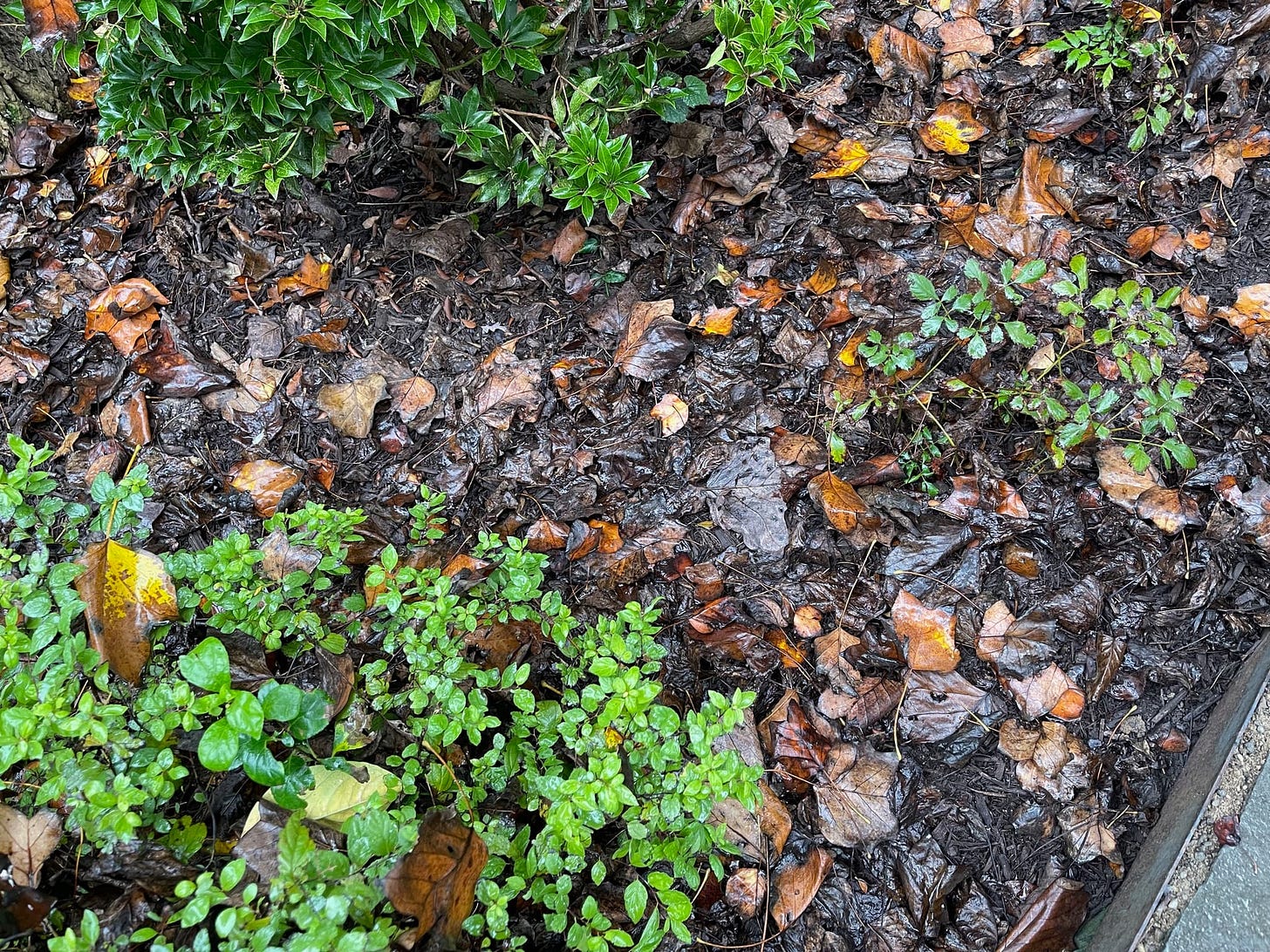Two Random Plant Stories and Some Other Stuff
Today I thought I would write about a couple of random plants in the garden that deserve our attention. Both of these perennials have a continuing story that kind of sort of fits the title of the newsletter, The Painful Education of a Type A Gardener. The stories are educational, but not necessarily painful, because in both cases the story isn’t about a plant dying (which is the painful yarn I’m used to spinning), but instead, the story is about how the plants are living. I know, right? Living? How very unusual. Let’s get to it.
The first plant that captured my attention today while I was on evening patrol (a time that isn’t typical for a garden patrol but sometimes you gotta do what you gotta do) is the hardy begonia living by my steps bed. I’ve written about this plant several times over the past two seasons. It was nominated for the “I thought you were dead award” last year, and the “What the heck are you doing here award” this year. (I get to make up the award names as I go along because I find them amusing, although others -- especially my readers -- may disagree.) Anyway, the last time I mentioned the plant in the newsletter, I said I’ve never seen one in full bloom, so here it is.

This saga may be getting old, but I have to tell it again. Three hardy begonias were planted in the original landscape plan. All three died. Two additional begonias were planted after three replacement Jacob’s ladder plants died. I thought the two replacement hardy begonias died. (I’m not sure if they replaced the replacement Jacob ladders or the original hardy begonias, but they replaced something or another.) When this hardy begonia appeared (reappeared?) this spring, it was a total surprise. I waited an entire season to get this photo of a begonia in full bloom. But that’s not the best part.
It turns out that hardy begonias reseed themselves, and by July I found maybe two to three dozen tiny baby begonia plants, spilling down the hill towards the trees. It took a while for me to realize that these tiny plants weren’t weeds, the tell being the reddish color of the underside of the leaves. I decided to pull them out anyway in the interest of keeping some order in the bed. Now that I see how beautiful my one mature hardy begonia has turned out to be, I’ve been thinking I may have made a big mistake. Maybe I should have kept a few babies in the bed just to see what happened. So … this evening I’m taking pictures of the hardy begonia for this post, and I look down. What do I see? You guessed it.


If you turn around and look at the bed on the opposite side of the steps, you see several mature plants that are also replacements. One plant turned out to be a biennial called a foxglove (Digitalis purpurea), which deserves its own story. On either side of the foxglove, you find a Lenten rose (hellebore). The Lenten rose on the left is also a replacement plant, because as you may have heard, I have some experience with killing and replacing plants. When the previous plant died, I planted the replacement in roughly the same place in the bed. Over the past several weeks I’ve noticed an exceptionally large weed growing out of the middle of my current Lenten rose. The leaves were so striking that I was nervous about pulling it. I used my PictureThis app to identify it and guess what I found? A new Lenten rose might be growing right in the middle of my current Lenten rose. Now what do I do? I’m thrilled to have a second plant (if it actually is a second plant) but separating the roots and dividing them will be quite a challenge. Or it might just be new growth on the current plant.

In other news, I thought I would bring up a subject that is soon to be at the top of everyone’s gardening list: what to do with the leaves. That’s right, in a short period of time my garden is going to be inundated with leaves from several tall trees in the yard, including a 100-foot-tall poplar next to the house, and a 100-foot-tall oak in the middle of the yard. Last year I wrote about my antics creating my own leaf mulch in a November 22, 2023, letter called What was I Thinking? At the time it seemed like an interesting experiment to pull leaves from the beds, mulch them, and then return them to the flower beds to add winter comfort for my plants. I will not be committing the same folly this year. I might have been much better off cleaning the leaves out of the beds and buying leaf mulch to mulch the plants that need it. But after a few weeks of rainy weather, this year’s garden beds are full of leaves that have little to do with the upcoming autumn leaf blizzard. Do I leave them until November and grumble about how untidy the beds look for the next 4 – 5 weeks, or do I remove them and do it all over again when the real leaf fall begins? Hmmm.

One last note: I have had “eyes on” our black snake, who I found chilling on the brick wall on the back side of our garage. I was cleaning leaves off the deck at the time and there he was. I handled the situation calmly and professionally. I didn’t scream or anything. We both just went about our business. I hope he was hunting up some small rodents we don’t need around here.
Sad Postscript: Two weeks after I wrote this newsletter, I noticed that squirrels had neatly eaten every flower off my hardy begonia. The leaves are untouched, and the plant is healthy, but the flowers are gone. I’m glad I took the photos when I did. Geez, I can’t even complain about the deer. It obviously wasn’t them.
This letter is done. I hope you enjoyed it. Or at least, I hope it was worth what you paid for it. You can share this letter with friends and enemies for the same price by hitting the “share” button buried in the text. Or you can send them a link to kensolow.substack.com. If you just can’t get enough of this amazing storytelling, you can always find more Painful Education of a Type A Gardener content in the archives. Just click on the small picture of me above the text and it takes you right there.
Thanks for your “likes” and your comments. They are very much appreciated.



